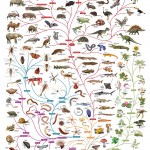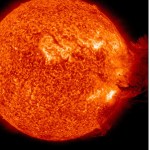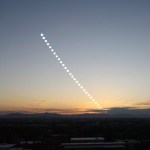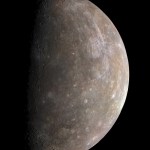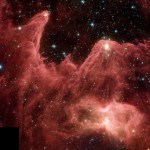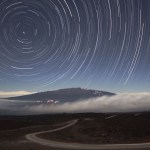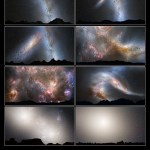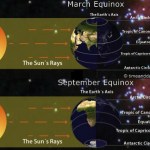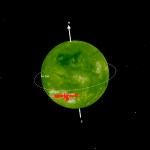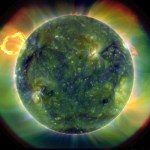sun
"If you are writing any book about the end of the world, what you are really writing about is what's worth saving about it." -Justin Cronin
Well, it's Friday again, and that means it's time to dip into the question/suggestion box, and see what you've come up with for me. This week's Ask Ethan comes from our reader Michael Acosta, who wants to know about the end of the world. Not, mind you, the way the world is actually likely to end, but in a way that would be satisfying to an aspiring science fiction writer.
In this wonderful science fiction book I am writing, there is a subplot involving…
"Ignorance more frequently begets confidence than does knowledge: it is those who know little, and not those who know much, who so positively assert that this or that problem will never be solved by science." -Charles Darwin
There are problems with science today, no doubt. With all the knowledge we've accumulated about the Universe, from the smallest subatomic scales to the farthest recesses of deep space, there are still realms and regimes where our best theories fail, where the predictions and the data don't match, and where no known explanation is sufficient for the phenomena that shows up…
"You can't exactly bake a man to your specifications... A hybrid of Einstein, Tarzan and Inge Meysel doesn't exist." -Peer Steinbruck
Of course, if you create enough chances, all the things that could eventually happen will come to pass. This is as true for human beings as it is for the physical Universe. And for our planet, our nearest major neighbor in the Universe -- the Moon -- provides us with a huge variety of sights, if only we're willing to wait.
Image credit: Doug Zubenel.
Every 27.3 days, the Moon makes a complete orbit around the Earth, traveling a full 360° through space.…
On February 15th, Asteroid 2012 DA14 came hurtling between us and our satellites, twelve times nearer than the Moon, so close that it was visible through binoculars from certain parts of the globe. Greg Laden writes, "This asteroid is not going to hit the earth now or during any of the next few decades, but eventually it may well do so." On Starts With a Bang, Ethan Siegel writes that the Sun's 11-year Solar Cycle peaks in 2013, meaning we can look forward to a year filled with solar flares. Even when these are spewed towards Earth, our magnetic field protects us from irradiation. But solar…
"It does no harm to the romance of the sunset to know a little bit about it." -Carl Sagan
I would argue the exact opposite, in fact: the beauty of a sunset, in all of its varieties and variations, is only enhanced the more you know about it.
Image credit: Dan Schroeder, via Picasa.
The next time you watch the Sun descend through the sky, towards the horizon, you might marvel at how the Sun remains the same size all the way down. At just slightly over half-a-degree, the Sun appears to drop at a constant rate throughout the afternoon and into early evening.
But there are some small changes…
"Concentrate all your thoughts upon the work at hand. The sun's rays do not burn until brought to a focus." -Alexander Graham Bell
Imagine a beautiful, clear day. The Sun is shining, the skies are clear, and you couldn't ask for a nicer day.
Image credit: © 2012 Free HD wallpapers.
All of a sudden, the Sun itself appears to brighten, just for a brief amount of time, like it released an extra burst of energy. That night, some 17 hours later, the most spectacular auroral display ever brightens the night in a way you never imagined.
Image credit: Jónína Óskarsdóttir.
Workers across the…
"You don't drown by falling in the water; you drown by staying there." -Edwin Louis Cole
Our Solar System is -- at least from our perspective -- the most well-studied system of planets, moons, asteroids and comets in the entire Universe.
Image credit: Olaf Frohn, from earlier in 2012.
And in this system, the closest planet to our Sun, Mercury, was also one of the most poorly understood planets until very recently. Because Mercury is so close to the Sun, it's very difficult to view it under good conditions with a telescope; the risk of ruining your optics by exposing them to direct…
"Man alone is born crying, lives complaining, and dies disappointed." -Samuel Johnson
But the stars, as opposed to humans, are born shining, with hundreds (or more) of brothers and sisters, shine ever more brightly over their lifetimes, and die in spectacular fashion. As far as we can tell, here's the past, present and future story of all the Sun-like stars in our galaxy.
Bok Globule Barnard 175; image credit by Jerry Lodriguss of http://www.astropix.com/.
At some point in the far distant past, every star in our galaxy was once no more than a molecular cloud of gas, with gravity attempting…
"Nature is relentless and unchangeable, and it is indifferent as to whether its hidden reasons and actions are understandable to man or not." -Galileo Galilei
All of science is rooted in the idea that natural phenomena can be explained naturally, and that if we want to know how anything in the Universe works, all we need to do is ask the Universe the right questions, and the answers will appear.
So what about the question of the night sky, and why it appears to rotate the way it does?
Image credit: Peter Michaud (Gemini Observatory), AURA, NSF.
There are two straightforward…
"It is always wise to look ahead, but difficult to look further than you can see." -Winston Churchill
We've come a long way in this Universe. Over the past 13.7 billion years, we've formed the light elements out of a sea of protons and neutrons, cooled and expanded to form neutral atoms for the first time, gravitationally collapsed hydrogen and helium gas clouds to form the first stars, borne witness to generations of stellar deaths and rebirths, lived through the formation of hundreds of billions of galaxies and the clustering together of thousands or more galaxies into clusters, filaments,…
"Soon the earth will tilt on its axis and begin to dance to the reggae beat to the accompaniment of earthquake. And who can resist the dance of the earthquake, mon?" -Peter Tosh
Every year, there are two special days where every place on Earth receives the same amount of sunlight -- 12 hours -- split evenly between night and day: the equinoxes!
Image credit: timeanddate.com.
Like all known objects that revolve around another due to gravity, the Earth rotates along its journey around the Sun. But on those two days of the equinox (from the Latin, meaning "equal nights"), the Earth's axis-of-…
Well, it is always exploding. But I just heard that "A big coronal hole is turning directly towards the Earth. Solar wind flowing from the opening should reach our planet on June 5-7, possibly sparking geomagnetic storms" and maybe the aurora will be visible over a larger area.
I heard that from the iPad app "3D Sun." This is an app that informs me whenever the sun is up to anything interesting, and also provides images of current and older solar events, a handy glossary of terms, and an excellent 3D sun "globe" (as it were) which can be used to find landmarks and stuff:
Pinch-able…
"The moon shuts off the beams of the sun as it passes across it, and darkens so much of the earth as the breadth of the blue-eyed moon amounts to." -Empedocles, ~450 B.C.
Less than two weeks ago, I saw my first annular eclipse, with some spectacular results at the moment of maximum eclipse.
From my first eclipse expedition, to False Klamath Cove, on the coast in northern California.
This happens, of course, because -- from our point of view -- the Moon appears to pass in front of the Sun, blocking a fraction of the light coming from it.
Image credit: NASA / Solar Dynamics Observatory.
And…
Same old thing as yesterday...
Seriously, wtf is going on with the Sun?
click to embiggen
phew.
ok, so there are some, finally, like 4
upturn into the new cycle has started, bit late and slow
click to embiggen
definitely reminiscent of the late 19th C
click to embiggen
new prediction for the cycle amplitude is low and interesting
Belgians are still the definitive authority on the subject
need to figure this magnetic cycling thing out, getting to be annoying
Chris S recently posted a lengthy comment, an extended excerpt from a recent Proceedings of the Royal Society paper. Full citation is: Solar change and climate: an update in the light of the current exceptional solar minimum
Mike Lockwood
Proc. R. Soc. A 8 February 2010 vol. 466 no. 2114 303-329
The abstract is here.
It makes for a very interesting read with lots to think about so I though I would promote it to a post of its own....
The history of science reveals a series of 'controversies'. These often develop into a state where there is little debate within the relevant academic…
I was at the zoo this weekend, it was fun but hot. Somewhere near the middle, there was a sun dial.
The cool thing (well, I think sun dials are cool anyway) was that the shadow was pointing about to the "12". I looked at my watch and it said 1:05 PM. What is up with that? The answer: Daylight Saving Time.
What does noon traditionally mean? In this day of the digital watch, most people associate noon with 12:00, you know - lunch time. But before clocks, noon referred to the time of day where the Sun was at the highest point in the sky. It is not too difficult to find this time. Just…
From APOD:
(click on image for full resolution, totally awesome!)
Here is an equally stuning video of that prominence erupting:
Ironic that according to the IPCC that massive ball of fire has nothing to do with the climate which is entirely controled by CO2, isn't it?
(As humour is hard to detect on the internets I had better spell it out: the IPCC makes no such ridiculous claim, that is a denialist strawman. The sun sends around 343W/m^2 our way, but the important factor is change in that number, which since around 1850 is ~0.3W/m^2 while GHG direct forcing is ~2.5W/m^2. Kinda ruins the…
One of things I like to think about in science is "how do we know that?" It is interesting how one thing builds on another. This is a story of how the Greeks estimated the distance from the Earth to the Sun (an important idea in the development of the model of the solar system). I like this story because it is not too complicated. In fact, one could easily reproduce these measurements themselves. So, here is what I will talk about:
Measuring the size of the Earth.
Determining the distance from the Earth to the moon and the size of the moon.
Calculating the distance (and size) to the Sun…
Question: When is the Sun directly overhead? (assume you are in the United States of America)
Common Answers:
Everyday at noon.
On the summer solstice (June 21ish)
Answer: For continental U.S. the answer is never. Since the Earth's rotation axis is tilted 23.5 degrees with respect to its orbital motion around the Sun, one would have to be less than 23.5 degrees above or below the equator to have the Sun pass directly overhead (once per year).
Here is a video I made over the course of a day in Louisiana. Note that it rains and then the clay softens the pen falls. At the end, my dog hit…
tags: life cycle of a star, astronomy, physics, education, streaming video
The average star 'lives' for roughly 12 billion years. This wonderful video provides us with a visual glimpse into the entire life cycle of a G-type star, like our sun, from birth to death [6:29]

